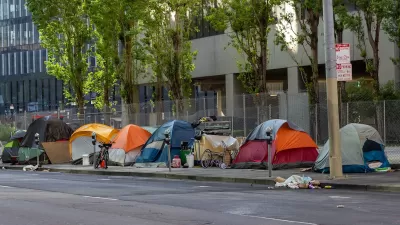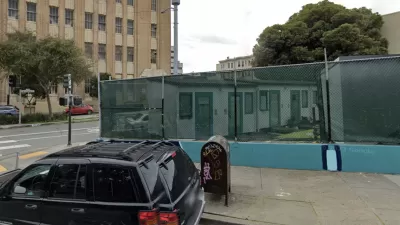It can often take months for unhoused residents to access supportive housing. When they do, conditions can be unbearable.

According to an SFist article by Joe Kukura, San Francisco has cut the vacancy rate in its single-room occupancy hotels (SROs), designed as supportive housing for formerly unhoused people, from 11.5 percent to 7.8 percent.
While poor building conditions are to blame for some vacancies—run-down units, vermin infestations, and high crime rates make some buildings unlivable—“the primary reason most of those units are sitting empty is paperwork — someone wants a unit, but the wheels of bureaucracy are still spinning to get them into it.”
An article in the San Francisco Chronicle adds, “In an investigative series called Broken Homes, the Chronicle found widespread disrepair and staffing shortages in many supportive-housing SROs, along with an alarming number of fatal drug overdoses. A lack of funding and oversight from HSH had allowed such problems to fester.” Now, the city is working to reduce wait times, make capital improvements, and bring the vacancy rate down further. The city’s Department of Homelessness and Supportive Housing (HSH) “recently embarked on a monthslong campaign to fill half of the 140 empty units in four of the most challenging buildings. The department is now trying to move people into other similarly underutilized properties,” with a goal of reducing vacancies to 7 percent or lower.
FULL STORY: SF Finally Getting Somewhat Better at Filling Long-Vacant Supportive Housing Units

Planetizen Federal Action Tracker
A weekly monitor of how Trump’s orders and actions are impacting planners and planning in America.

Congressman Proposes Bill to Rename DC Metro “Trump Train”
The Make Autorail Great Again Act would withhold federal funding to the system until the Washington Metropolitan Area Transit Authority (WMATA), rebrands as the Washington Metropolitan Authority for Greater Access (WMAGA).

The Simple Legislative Tool Transforming Vacant Downtowns
In California, Michigan and Georgia, an easy win is bringing dollars — and delight — back to city centers.

The States Losing Rural Delivery Rooms at an Alarming Pace
In some states, as few as 9% of rural hospitals still deliver babies. As a result, rising pre-term births, no adequate pre-term care and harrowing close calls are a growing reality.

The Small South Asian Republic Going all in on EVs
Thanks to one simple policy change less than five years ago, 65% of new cars in this Himalayan country are now electric.

DC Backpedals on Bike Lane Protection, Swaps Barriers for Paint
Citing aesthetic concerns, the city is removing the concrete barriers and flexposts that once separated Arizona Avenue cyclists from motor vehicles.
Urban Design for Planners 1: Software Tools
This six-course series explores essential urban design concepts using open source software and equips planners with the tools they need to participate fully in the urban design process.
Planning for Universal Design
Learn the tools for implementing Universal Design in planning regulations.
Smith Gee Studio
City of Charlotte
City of Camden Redevelopment Agency
City of Astoria
Transportation Research & Education Center (TREC) at Portland State University
US High Speed Rail Association
City of Camden Redevelopment Agency
Municipality of Princeton (NJ)





























